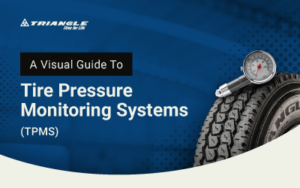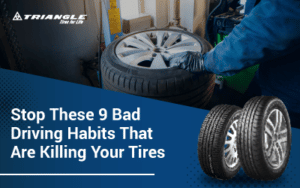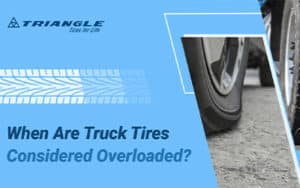Tires provide the necessary traction to move your vehicle safely on roads, so ensuring they’re always in good shape is crucial. That said, tire damage is a common issue among many drivers.
A type of tire damage you should be aware of is tire tread separation, which is one of the usual causes of slips and pileups, especially on slippery roads. To keep your trips safe, let’s delve into tire tread separation, its tell-tale signs and causes, and what to do when it happens.
What is Tire Tread Separation?
Tire tread separation occurs when a tire’s patterned outer layer separates from the rest of the wheel, undermining your vehicle’s ability to maintain its grip on the road’s surface.
Treads are the parts of tires directly in contact with the road to maintain traction. They have patterns that channel dust and water away from the wheel to prevent hydroplaning and slipping, keeping you and your passengers safe even on wet roads. However, significant tire damage can separate the tread from the entire tire, compromising your car’s performance and handling.
Tire tread separation can also cause deflation—or, worst, tire blowouts—while on the road, which can endanger you and other road users.
What Causes Tire Tread Separation?
Understanding the different tire separation causes will help you avoid bad driving practices to reduce the rate at which this damage occurs.
-
Hot tires due to rough driving
Drifting, excessive braking, and fast driving can overheat and detread tires. For instance, slamming on your brakes to prevent collisions puts extreme stress on the rubber, causing treads to separate faster than expected. Check your tires for any damage following these instances to avoid driving with damaged wheels.
-
Underinflation
Underinflated tires have a pressure (PSI) lower than what manufacturers recommend. They’re more likely to wear and detread faster than usual since they can’t optimize traction. Maintain your tire pressure regularly to prevent damage due to underinflation.
-
Overloading
Overloading or driving with items or passengers weighing heavier than your tires can handle places unmanageable stress on the rubber. It may lead to overheating and uneven weight distribution, potentially causing tread separation. Mitigate this risk by following the manufacturer’s load capacity recommendations on the tire sidewall.
-
Excessive wear and tear
Tires naturally degrade with time, primarily when you use your cars for extended periods and distances. While wear and tear are unavoidable, you can prevent accidents due to tread separation by using tires only for the recommended number of years and replacing them with new ones once needed.
-
Botched repairs
Incorrect repairs may lead to rapid tread separation. For instance, service technicians might inadvertently puncture your tires when you take them out for flats and other services, leading to damage that could cause detreading. To avoid such instances, only have experienced professionals work on your tires. You could also opt to get new ones instead of repairing them.
-
Manufacturer defects
Tire manufacturers sometimes make mistakes that are out of your control, like when they use faulty materials or improper production practices. So, be on the lookout for announcements regarding any products at risk of premature separation. Also, consider purchasing tires only from trustworthy manufacturers to avoid possible defects and low-quality products.
4 Signs of Tire Tread Separation
Knowing the following indications of tread separation can help you avoid driving with faulty tires and potentially causing road accidents.
1. Bulges or bubbles on the sidewall
A tell-tale sign of tread separation is the appearance of bubbles or bulges along the tire’s sidewall, indicating weak spots under its surface. These blisters start small but grow more prominent as more tread detaches.
2. Visible gaps or cracks between the tread and sidewall
Check your tires for any cracks along their surface. This damage may indicate that the tread is starting to separate, causing increased stress and other damage to the entire wheel.
3. Vibrations and shaking while driving
Suffering vibrations throughout your drive, even at moderate speeds, indicates that your tire treads have separated. It often begins as a barely noticeable tremor but progresses to shaking as the damage worsens, making it feel like the affected wheel is barely attached to the car.
4. Reduced traction and handling
As mentioned, treads are responsible for your vehicle’s traction. So, a damaged and separated tread undermines handling and makes tires more prone to hydroplaning and slips. If your tires fail to grip the road, inspect them for signs of damage to confirm if tread separation is responsible.
Can You Repair a Separated Tire Tread?
No, you can’t repair a separated tire tread. Damage due to tread separation is significant, so any attempts to fix it won’t revert the tire to its original strength. It’ll become unreliable and prone to failure, making your car a road hazard, especially if you drive fast and the damaged tire blows out.
The best action to resolve separated treads is to replace affected tires with new ones. Buy tires only from a trusted manufacturer to ensure they drive safer and longer than low-quality ones. Also, regularly inspect and maintain tires to avoid premature wear and tear and other damage that could lead to detread.
Avoid Tread Separation with Triangle Tires
Tire tread separation is a critical issue that places everyone on the road at risk. As such, learning to identify the signs of detread is vital to know what to do when it occurs. You can then take proactive measures to ensure your tires’ optimal performance and minimize the risks associated with tread separation.
The best way to mitigate tread separation is to get high-quality tires from a trusted manufacturer. Triangle Tires offers reliable products for passenger cars, light trucks, and heavy equipment vehicles, ensuring long-term road safety regardless of what you drive. The best part? They’re available for delivery at an affordable price.
Browse our tire catalog or contact us today to discuss how we can help.


